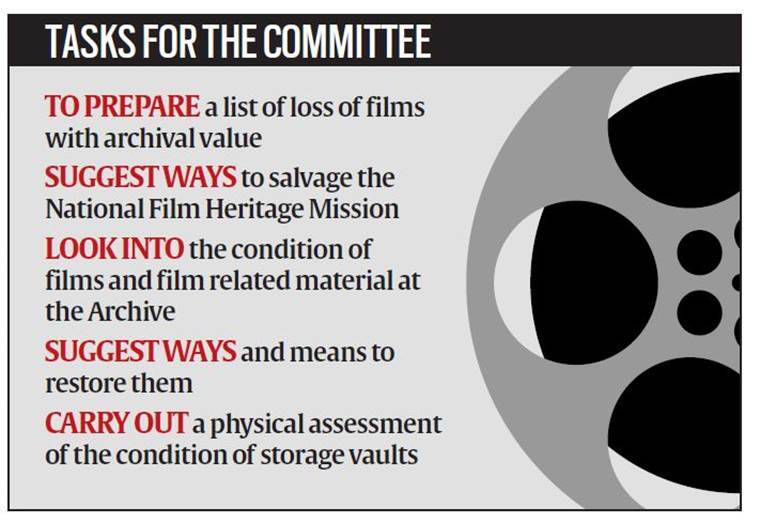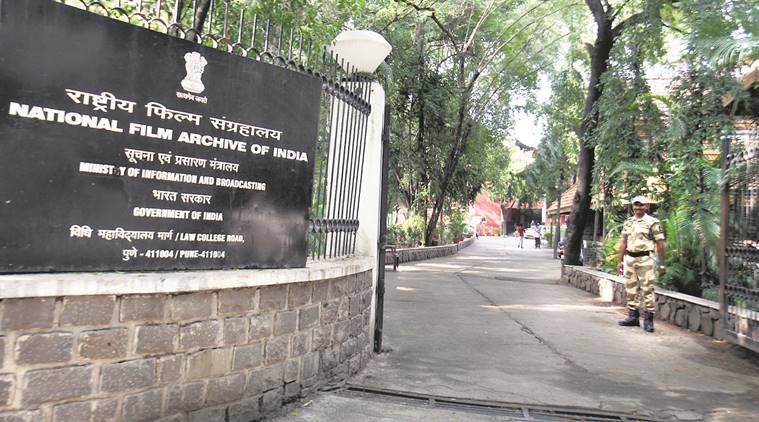Apart from this, the I&B ministry had also formed a committee to review the work being done under the National Film Heritage Mission (NFHM) at the NFAI.

ATIKH RASHID
The Ministry of Information and Broadcasting (I&B) has constituted a five-member expert committee comprising veteran filmmakers and film preservation experts to look into the condition of films as well as the storage vaults at the National Film Archive of India (NFAI). The committee will also suggest ways and means to preserve the films in a better manner. The committee comprises filmmakers Shaji N Karun, Ketan Mehta, Piyush Shah, former NFAI director K S Sasidharan and Shri Ponnaya, former chief of laboratory at Prasad Labs, Hyderabad.
Starting from September 2017, The Indian Express had published a series of news reports bringing to the fore glaring lacunae in the way celluloid films were being looked after at the Pune-based NFAI. Among these were the findings of an inventory carried out by a private firm for NFAI, which had claimed that as many as 51,500 film reels that were on accession records of the Archive were not physically present in its vaults.
Another news report had pointed out that thousands of film reels received from various sources by NFAI were lying in gunny bags. Yet another report stated that even after a major fire incident in 2003, the Archive lacked fire-fighting capacity, and nine important film prints were lying in a sealed film lab in Mumbai where NFAI had sent them for copying way back in 2007.
In March 2018, The Indian Express reported that due to NFAI’s failure to maintain the desired temperature and humidity levels within its vaults, a major chunk of film reels stored in the vaults were affected by deterioration — termed technically as vinegar syndrome. Earlier this week, this newspaper had published a report pointing out that three regional offices opened by NFAI in 1980s were non-functional for over a decade and no efforts were being taken to revive them.

The committee has been tasked with five specific responsibilities, namely to prepare a list of loss of films with archival value, suggest ways to salvage the National Film Heritage Mission, look into the condition of films and film related material at the Archive, suggest ways and means to restore them, and carry out a physical assessment of the condition of storage vaults.
An official with the I&B Ministry, who is privy to the development, said the Ministry decided to form a committee after going through a preliminary report submitted by Karun, following a surprise visit by him and Joint Secretary (Films) Ashok Kumar Parmar on April 4. Karun and Parmar had visited all film storage vaults at both the premises of NFAI in the city.
ALSO READ | ‘Vinegar syndrome’ ruining film treasure at National Film Archive, reveals data from film assessment project
“Two weeks ago, I had submitted a report to the Ministry based on my observations during the surprise check. I had suggested a few things that needed to be done for better storage of films at the Archive. Based on that, the five-member committee has been formed to probe the matter further,” Karun told The Indian Express. The filmmaker said the committee members will hold a meeting to decide the way forward. “The aim is to assess the damage that has been done to films stored at NFAI, find a way to avoid it in future and salvage the films that have been damaged,” said Karun.
Apart from this, the I&B ministry had also formed a committee to review the work being done under the National Film Heritage Mission (NFHM) at the NFAI.
The NFHM is a nearly Rs 600-crore project aimed at conserving, digitising and preserving the celluloid heritage of the country. Launched in 2014, it is being implemented by the NFAI.
The committee will look into financial as well as other matters pertaining to the NFHM. This committee comprises Parmar, Additional Secretary and Financial Advisor Ali R Rizvi, and Senior Economic Advisor Rohit Kumar Parmar.

